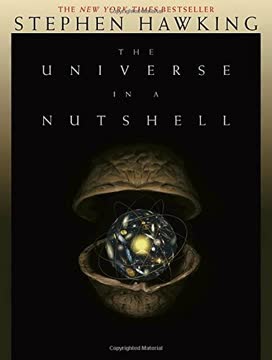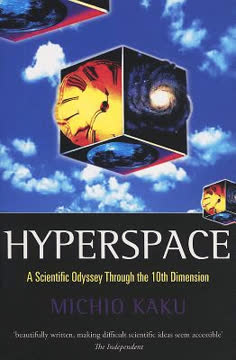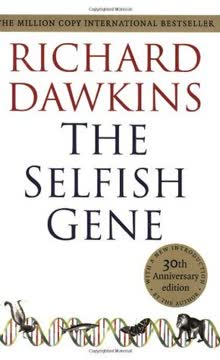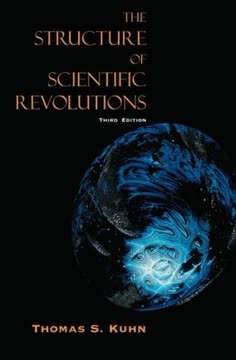Key Takeaways
1. Chaos theory reveals order in apparent randomness
Chaos strikes both a note of caution and a dash of hope.
Chaos is not pure randomness. It is a type of behavior in which underlying patterns, constant feedback loops, repetition, self-similarity, fractals, and self-organization exist. Chaos theory studies these behaviors in complex systems that may appear random at first glance.
Examples abound in nature and society:
- Weather patterns
- Stock market fluctuations
- Turbulent fluids
- Population growth in ecology
- Electrical circuit behavior
Chaos theory provides tools to understand and analyze these systems, revealing that what seems unpredictable may actually follow deterministic laws. This insight has profound implications for how we view and interact with the world around us.
2. Simple systems can produce complex behavior
Simple systems give rise to complex behavior. Complex systems give rise to simple behavior. And most important, the laws of complexity hold universally, caring not at all for the details of a system's constituent atoms.
Simplicity breeds complexity. Contrary to traditional scientific thinking, chaos theory demonstrates that even simple systems with few variables can generate incredibly complex and unpredictable behavior when there is nonlinearity and feedback.
Examples of simple systems producing complex behavior:
- The logistic map in population biology
- Lorenz's three-equation model of weather
- Double pendulum systems
- Cellular automata
This realization challenges the reductionist approach in science, which assumes that understanding the parts leads to understanding the whole. Instead, chaos theory suggests that emergent properties and behaviors arise from the interactions within systems, regardless of their underlying components.
3. The Butterfly Effect: Small changes lead to big consequences
The flapping of a single butterfly's wing today produces a tiny change in the state of the atmosphere. Over a period of time, what the atmosphere actually does diverges from what it would have done. So, in a month's time, a tornado that would have devastated the Indonesian coast doesn't happen. Or maybe one that wasn't going to happen, does.
Sensitivity to initial conditions. The Butterfly Effect, discovered by Edward Lorenz, illustrates how tiny changes in starting conditions can lead to vastly different outcomes in chaotic systems. This phenomenon challenges the notion of predictability in complex systems.
Implications of the Butterfly Effect:
- Long-term weather forecasting is inherently limited
- Historical "what-if" scenarios are fundamentally unpredictable
- Small interventions can potentially have large-scale impacts
- Precise control of chaotic systems is difficult, if not impossible
Understanding the Butterfly Effect encourages a more holistic and probabilistic approach to analyzing and interacting with complex systems, rather than relying on simplistic cause-and-effect models.
4. Fractals: Nature's intricate patterns of self-similarity
Clouds are not spheres, mountains are not cones, coastlines are not circles, and bark is not smooth, nor does lightning travel in a straight line.
Nature's geometric language. Fractals, introduced by Benoit Mandelbrot, are geometric shapes that exhibit self-similarity at different scales. They provide a more accurate way to describe and understand the complexity of natural forms and processes.
Characteristics and examples of fractals:
- Self-similarity: Parts resemble the whole at different scales
- Fractal dimension: A measure of a shape's complexity
- Examples in nature:
- Coastlines
- Fern leaves
- Broccoli florets
- Blood vessel networks
- Mountain ranges
Fractals have applications beyond describing natural shapes. They are used in computer graphics, antenna design, data compression, and even in analyzing financial markets. The fractal perspective offers a new way to understand and model the intricate structures found throughout the natural and man-made world.
5. Strange attractors: The hidden structure in chaotic systems
The Lorenz attractor was order masquerading as randomness.
Chaos has structure. Strange attractors, discovered by Edward Lorenz, are geometric shapes in phase space that represent the long-term behavior of chaotic systems. They reveal that even in apparent randomness, there are underlying patterns and constraints.
Key features of strange attractors:
- Never repeat exactly, but remain within a bounded region
- Exhibit fractal structure
- Sensitive dependence on initial conditions
- Examples:
- Lorenz attractor (butterfly shape)
- Rössler attractor
- Hénon map
Strange attractors provide a visual and mathematical way to understand the behavior of chaotic systems. They demonstrate that chaos is not complete randomness, but rather a complex form of order that traditional linear analysis fails to capture.
6. Universality in chaos: Common patterns across diverse systems
The same mathematical structures are seen in the models of species competing for resources, the rise and fall of an animal population, the changes in global weather patterns, and the dripping of a leaky faucet.
Chaos transcends disciplines. One of the most profound insights of chaos theory is the discovery of universal patterns and behaviors across vastly different systems. This universality suggests that there are fundamental principles governing complex systems, regardless of their specific components or scale.
Examples of universal patterns in chaos:
- Period-doubling route to chaos (Feigenbaum constants)
- Power law scaling in fractals
- Self-organized criticality
- Universality classes in phase transitions
The discovery of these universal patterns has led to cross-pollination of ideas between different fields of study. It allows insights from one area, such as fluid dynamics, to be applied to seemingly unrelated fields like economics or ecology, fostering interdisciplinary research and understanding.
7. Chaos in nature: From weather to biological rhythms
In fluid systems and mechanical systems, the nonlinear terms tend to be the features that people want to leave out when they try to get a good, simple understanding.
Nature is inherently nonlinear. Chaos theory provides tools to understand and model complex natural phenomena that have long resisted traditional analysis. From large-scale weather patterns to the intricate rhythms of biological systems, chaos offers new insights into the workings of nature.
Applications of chaos theory in natural systems:
- Weather and climate modeling
- Fluid dynamics and turbulence
- Population dynamics in ecology
- Cardiac arrhythmias and brain activity
- Geological processes (earthquakes, erosion)
By embracing nonlinearity and chaos, scientists can develop more accurate models of natural systems. This approach leads to better predictions and understanding of phenomena that were previously considered too complex or random to analyze effectively.
8. The edge of chaos: Where creativity and adaptation thrive
Chaos was the end of the reductionist program in science.
Balancing order and disorder. The concept of the "edge of chaos" suggests that complex systems are most adaptable, creative, and capable of solving problems when they operate in a region between rigid order and complete randomness. This idea has implications for understanding evolution, cognition, and even social systems.
Characteristics of systems at the edge of chaos:
- High sensitivity to external stimuli
- Ability to store and process information efficiently
- Capacity for emergent behavior and self-organization
- Examples:
- Brain activity during problem-solving
- Ecosystem dynamics
- Evolutionary processes
- Innovative organizations
The edge of chaos concept challenges the notion that stability and order are always desirable. Instead, it suggests that a degree of unpredictability and flexibility is essential for adaptation and innovation in complex systems.
9. Chaos challenges traditional scientific approaches
The sciences do not try to explain, they hardly even try to interpret, they mainly make models.
A paradigm shift in science. Chaos theory represents a fundamental change in how scientists approach complex systems. It challenges the reductionist and deterministic views that have dominated science since Newton, emphasizing the importance of holistic understanding and the limits of predictability.
Key shifts in scientific thinking due to chaos theory:
- From reductionism to holism
- From linear to nonlinear analysis
- From predictability to probabilistic thinking
- From continuous to discrete mathematics
- From equilibrium to non-equilibrium systems
These changes have led to new research methodologies, including computer simulation, qualitative analysis of dynamical systems, and interdisciplinary collaboration. Chaos theory encourages scientists to embrace complexity and uncertainty, rather than simplifying systems to fit existing models.
10. Applications of chaos theory across disciplines
Chaos breaks across the lines that separate scientific disciplines.
A unifying framework. The insights and tools of chaos theory have found applications far beyond physics and mathematics. They provide a common language for understanding complex phenomena across diverse fields, leading to new insights and practical applications.
Applications of chaos theory in various domains:
- Economics: Market behavior, risk analysis
- Engineering: Control systems, signal processing
- Medicine: Heart rate variability, epidemiology
- Social sciences: Urban planning, traffic flow
- Art and music: Fractal-based compositions and visuals
- Computer science: Cryptography, data compression
The wide-ranging applications of chaos theory demonstrate its power as a unifying concept in science and beyond. By providing tools to analyze and understand complex systems, chaos theory continues to bridge gaps between disciplines and inspire new approaches to longstanding problems.
</instructions>
Last updated:
FAQ
What's Chaos: Making a New Science about?
- Exploration of Chaos Theory: The book explores the emergence of chaos theory across various scientific fields, such as meteorology, biology, and physics, highlighting how simple systems can lead to complex, unpredictable behaviors.
- Interdisciplinary Connections: James Gleick demonstrates how chaos theory links different scientific disciplines, showing its universal application across various fields.
- Historical Context: The narrative includes historical anecdotes about key figures like Edward Lorenz and Mitchell Feigenbaum, emphasizing the evolution of scientific thought and the development of chaos theory.
Why should I read Chaos: Making a New Science?
- Understanding Complexity: The book offers insights into how complexity arises from simple rules, challenging traditional notions of predictability in science.
- Engaging Narrative: Gleick's accessible writing style makes complex scientific concepts understandable, with storytelling that keeps readers intrigued.
- Cultural Relevance: The themes of chaos and unpredictability are relevant to contemporary issues, from weather patterns to stock markets, making the book pertinent for today's world.
What are the key takeaways of Chaos: Making a New Science?
- Butterfly Effect: The book introduces the concept that small changes in initial conditions can lead to vastly different outcomes, exemplified by Lorenz's weather models.
- Nonlinearity in Systems: Many natural systems are nonlinear, meaning their outputs are not directly proportional to their inputs, a key characteristic of chaotic systems.
- Fractals and Self-Similarity: Fractals are discussed as a way to understand complex shapes and patterns in nature, highlighting their self-similar properties across different scales.
What is the Butterfly Effect in Chaos: Making a New Science?
- Sensitivity to Initial Conditions: The Butterfly Effect illustrates how small changes in initial conditions can lead to significant and unpredictable variations in outcomes.
- Real-World Examples: Gleick uses examples like weather patterns and ecological systems to demonstrate the Butterfly Effect, showing how interconnected systems can amplify minor disturbances.
- Implications for Predictability: This concept challenges the notion of predictability in complex systems, suggesting that long-term forecasts are inherently uncertain.
How does Chaos: Making a New Science explain the concept of fractals?
- Definition of Fractals: Fractals are complex geometric shapes that can be split into parts, each a reduced-scale copy of the whole, characterized by self-similarity.
- Applications in Nature: Fractals appear in various natural phenomena, such as coastlines and clouds, illustrating the underlying order in chaotic and irregular patterns.
- Mandelbrot's Contribution: Benoit Mandelbrot's work in developing fractal geometry provides tools for understanding complex patterns in nature, crucial for analyzing irregular shapes.
What role did Edward Lorenz play in chaos theory as described in Chaos: Making a New Science?
- Pioneering Work in Meteorology: Edward Lorenz discovered the Butterfly Effect through his work on weather prediction models, revealing the limitations of traditional forecasting methods.
- Introduction of Nonlinearity: Lorenz's equations demonstrated that weather systems are nonlinear, leading to unpredictable outcomes, a significant departure from classical physics.
- Impact on Scientific Thought: His work laid the groundwork for the broader acceptance of chaos theory, challenging established notions of determinism and predictability.
What are strange attractors in Chaos: Making a New Science?
- Definition of Strange Attractors: Strange attractors are patterns in phase space representing the long-term behavior of chaotic systems, characterized by their nonperiodic and complex structure.
- Connection to Turbulence: They help explain the behavior of turbulent flows in fluids, providing a framework for understanding how order can emerge from chaos.
- Visual Representation: Strange attractors can be visualized through computer simulations, revealing intricate patterns that reflect the underlying dynamics of chaotic systems.
How does Chaos: Making a New Science relate chaos theory to other scientific disciplines?
- Interdisciplinary Nature of Chaos: The book shows how chaos theory transcends traditional scientific boundaries, impacting fields like meteorology, biology, and economics.
- Shared Mathematical Framework: Many chaotic systems can be described using similar mathematical models, allowing for cross-disciplinary insights and applications.
- Real-World Implications: Chaos theory's implications extend to practical applications in various fields, leading to better predictions and decision-making.
What are the challenges of studying chaos as presented in Chaos: Making a New Science?
- Complexity of Nonlinear Systems: Analyzing nonlinear systems is inherently difficult, often defying traditional mathematical approaches and making accurate predictions challenging.
- Need for New Methodologies: New scientific methodologies, including computational techniques and graphical representations, are necessary for studying chaos.
- Resistance from Traditional Science: Chaos theory faced skepticism from established scientific communities, slowing its acceptance and integration into mainstream science.
What is the significance of universality in Chaos: Making a New Science?
- Common Patterns Across Systems: Universality refers to different chaotic systems exhibiting similar behaviors, exemplified by Feigenbaum's work on period-doubling bifurcations.
- Implications for Science: Recognizing universality suggests that insights from one system can apply to others, fostering interdisciplinary collaboration.
- Mathematical Foundation: Universality provides a framework for understanding chaos, allowing researchers to classify and analyze chaotic systems based on shared characteristics.
How does Chaos: Making a New Science address the relationship between chaos and order?
- Interplay of Chaos and Order: The book explores how chaos can arise from order and vice versa, challenging traditional views of stability and predictability.
- Examples in Nature: Examples like fluid behavior and population dynamics demonstrate how chaos and order coexist in various systems.
- Philosophical Implications: This relationship raises questions about determinism, free will, and the nature of reality, encouraging readers to reconsider their assumptions.
What methods or techniques are discussed in Chaos: Making a New Science?
- Phase Space Reconstruction: This technique allows researchers to visualize and analyze chaotic systems from time series data.
- Lyapunov Exponents: These measure the stability and predictability of chaotic systems, providing insight into their sensitivity to initial conditions.
- Computer Simulations: Advancements in computing technology have enabled the exploration of complex systems, a recurring theme in the book.
Review Summary
Chaos: Making a New Science received mixed reviews. Many praised its accessible introduction to chaos theory and engaging storytelling about the scientists involved. Readers appreciated learning about fractals, strange attractors, and the butterfly effect. However, some found it lacking in scientific rigor and clarity, with excessive biographical details. The book was seen as groundbreaking when published but may now be dated. Overall, it remains an influential work that sparked widespread interest in chaos theory among general readers.
Similar Books










Download PDF
Download EPUB
.epub digital book format is ideal for reading ebooks on phones, tablets, and e-readers.






